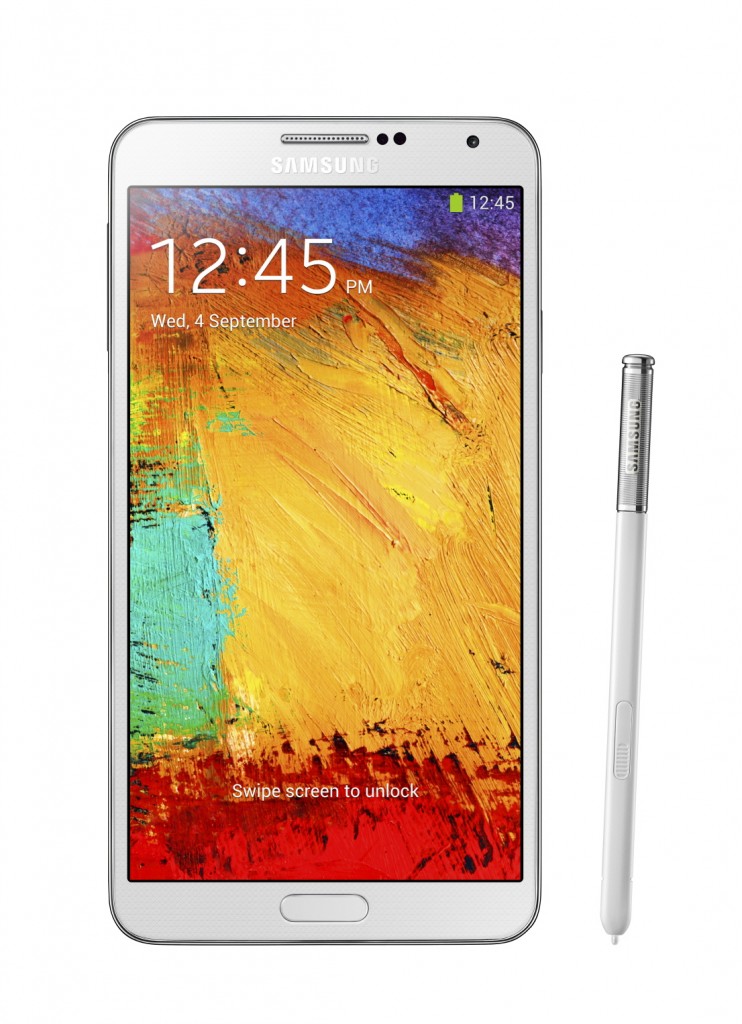The IFA event at Berlin, one of the increasingly important consumer electronic trade shows, just started, but tons of devices have already been launched. Amongst them, standing out from the crowd, is the Samsung Galaxy Note 3, unveiled with much excitement and fervor, as leaks failed to provide proper information before launch. The Note 3 is the third iteration of the very popular Note series of devices Samsung made popular. The range, infamously held responsible for creating the phablet phenomenon, also created a paradigm shift in the company, for its portfolio.
Lets go back a little bit. When the first Samsung Galaxy S launched, it was very clear that the company intends to make it its flagship series, with a halo effect trickling down the range under the same Galaxy brand. And then the successor, Samsung Galaxy S2 launched, at the time which the halo effect was essentially accomplished, but there was another device that Samsung launched in the same year – the Samsung Galaxy Note.

The Galaxy Note was purely seen as an experimental device, mainly because of its niche stylus capabilities and of course, a huge 5.3 inch screen. Considering the flagship devices at that time were bordering on 4 inch screens, the Note seemed too huge and sparked a world wide debate. Yet, the device was a runaway success. People loved the huge screen and reportedly, media consumption took center stage, unlike stylus usage, which was the Note’s USP.
The world slowly moved to bigger screens, and Samsung launched the Galaxy S3, the company’s first 720p flagship with a 4.8 inch screen that was alarmingly close to the Note’s screen size, so obviously Samsung had to make the next Note bigger. Then came the Galaxy Note II, with very similar specs and design of the flagship, but with a larger screen(5.5 inches). The Note II was perceived as just a bigger Galaxy S3 with a stylus and upgraded internals.

Talking of upgraded internals, since Samsung had more time with the Note II, it featured a faster SoC with more RAM to boot. Essentially, Samsung created more value in the Note II thanks to the timing(the SoC cycles are usually not in sync with the rest of the industry). The company made sure that the Galaxy S range launches in May and the Galaxy Note range launches in September.
This is still religiously followed by Samsung and thus arrived the new Samsung Galaxy S4 in May and the Galaxy Note 3, a couple of days back. The Galaxy S4 was an expected upgrade over the Galaxy S3 as well as the Note II, with updated hardware, internals and software, but unlike the Note II, the Note 3 is a massive upgrade over the Galaxy S4. Lets see what the advantages of Note 3 are, when compared with the Galaxy S4 –
- Screen – 5.7 inch non-pentile(need citations) screen on the Note 3 vs 5 inch pentile screen on the S4
- Exynos 5 Octa – higher clocked 1.9 GHz – Note 3 vs 1.6 GHz on the S4
- Option of Snapdragon 800 for LTE version vs Snapdragon 600 for S4
- 13 Megapixel camera with CRI LED and Smart Stabilizer vs nothing like that on the S4
- Ultra HD 4K recording on the Note 3 with 1080p at 60 fps and 720p at 120 fps vs nothing like that on the S4
- 3 GB of RAM vs 2 GB of RAM
- USB 3.0 – Super fast connectivity, a world’s first vs USB 2.0 on the S4
- Extra features* – S Pen Air command, Action memo, S Finder, new S Note
* – Depends on the S-Pen of course
The Galaxy S4 doesn’t look like Samsung’s flagship device now, does it? But the actual reality is, both the devices are flagships and the company times it so well that they both can co-exist in a similar time frame. Most of the hardware upgrades on the list above are just available for the Note 3, purely due to timing. We are just starting to various manufacturers take advantage of the Snapdragon 800 processor, and since Samsung has just released a Snapdragon 600 S4, it can’t release an upgraded S4 so soon. This is where the Note 3 fills in, as a flagship.
Why I say the Note 3 is a flagship device is because the market has completely embraced huge screen devices, especially in markets like India where >5 inch devices contribute 25% of the total smartphone shipments. The Galaxy Note 3 just doesn’t look large anymore, in fact it is smaller than the Note II and Samsung has categorically created even larger devices like the Mega 5.8 and the 6.3 for the ones who just use it for media consumption.
With the whole world accepting huge devices, the Note 3 doesn’t fall into any niche anymore. It’s now a very well executed flagship device that always one-ups the Galaxy S series. The innovations on the Note 3 will eventually end up in the S4 and be improved in the next Galaxy S, but the point is, Samsung seems to be only company that can do this. It has two flagship devices constantly one-upping each other in a specific time frame, each meeting success without cannibalization, thanks to the value added features on the subsequent devices.
It might have started accidentally, but with Note 3, the execution seems right, and the company has made it very clear its two flagship strategy. Do you think any other company can accomplish this feat, and be successful at it? Sound off in the comments section below.

